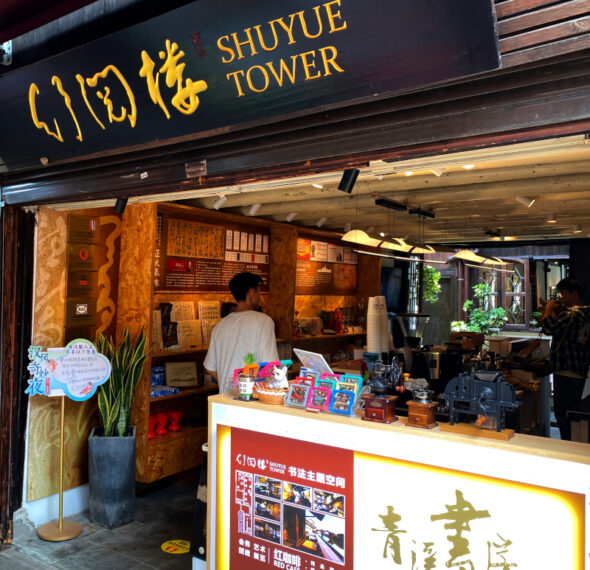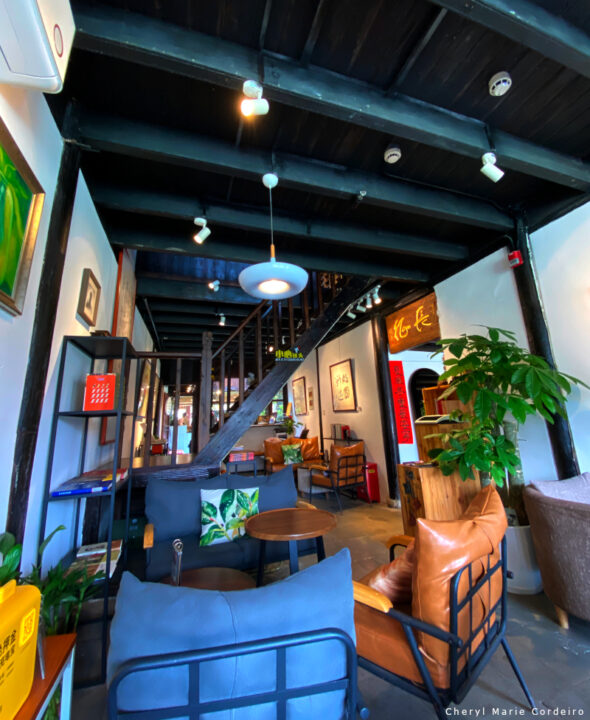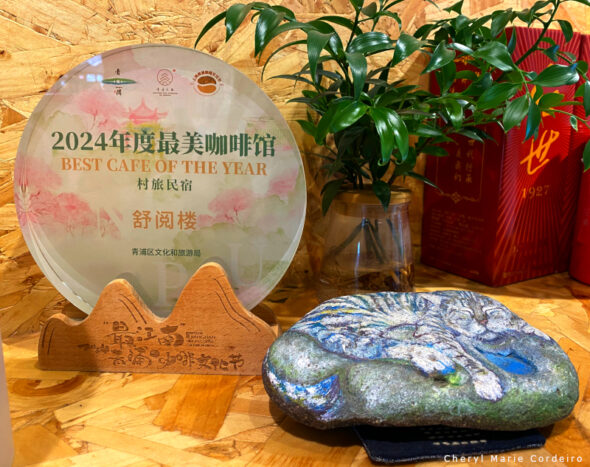
Photo & Text by CM Cordeiro © 2025
I was last in Shanghai in 2014. Back then, Zhujiajiao, Shanghai’s historic water village, was already one of the city’s most visited destinations. It had the feeling of a lively maze, with cobbled alleys and canals animated by local life. I remember browsing street stalls that sold everything from skewered meats to handcrafted silver trinkets. Wooden boats glided slowly through narrow waterways, giving visitors a sense of the town’s centuries-old rhythm. Even then, Zhujiajiao felt like a place evolving, slowly navigating the space between heritage and modern tourism.
More than a decade later, Zhujiajiao has transformed. Its historical architecture remains beautifully intact: stone bridges arch gracefully over the canals, while Ming and Qing-style shophouses still feature the latticework windows I’ve always loved. But the atmosphere feels more curated now. There’s a calm elegance to the way the town carries itself. The rhythm reminded me, curiously, of modern-day Chinatown in Singapore that was orderly, connected, and rooted in tradition but polished by contemporary touch.
Walking through the narrow streets again, I passed shops selling preserved fruits, hand-beaten silver jewelry, silk robes, tea in lacquered boxes, artisan chocolates, and even crickets kept as pets. The late spring air was warm and still. Just as the sun reached its highest point, I felt the need for a break – and that’s when I found it: a small café tucked quietly among the shophouses, with a name that didn’t immediately suggest coffee.
Shuyue Tower (舒阅楼) didn’t register as a café at first. The word “Tower” made me think of skyscrapers—like Shanghai Tower in Lujiazui, not a riverside coffee house. But stepping inside, I quickly realized I had entered something special.
Cool air drifted through the wooden-beamed space, and the quiet hum of a coffee grinder blended with the unexpectedly bold soundtrack playing inside. Rather than soft jazz or ambient lounge, the speakers pulsed with a young, stylish remix: 不该用情 (DJ女声版伴奏). It created a cool contrast with the surroundings—dark timber ceilings, timeworn walls, and floors that likely supported a warehouse or shophouse a century ago. The café had preserved its structure while infusing it with youthful energy. In today’s slang: very niú 牛.
The interiors were warm and thoughtful. Rattan furniture, leafy green pillows, and shelves lined with books and calligraphy gave the space the feel of a quiet salon. As I made my way deeper inside, I found folding windows opened out onto the canal. I took a seat by one, ordered my beloved cappuccino, and simply sat still, watching the world drift by.
Outside, the Fangsheng Bridge arched over the water in the distance. Tourists paused at the top for photos or simply to take in the view. The whole scene felt like a living scroll painting that was gentle, continuous, unfolding.
The cappuccino was delicious: velvety foam, a nutty depth, and a dusting of something I guessed to be ground nutmeg. Curious, I returned to the counter to ask more about the beans and the barista’s style. That’s when I learned that Shuyue Tower had recently been named Best Café of the Year 2024 by the Qingpu District Culture and Tourism Bureau.
It made perfect sense. The coffee was excellent, but more than that, it was the atmosphere that stayed with me. Shuyue Tower wasn’t just a place to escape the heat, it was a space carefully created to hold both history and modern life. A quiet bridge between old and new, between cultural memory and everyday comfort.



